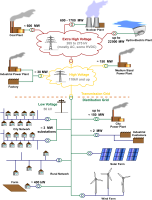
Photo from wikipedia
The main objective of this study was to describe the repetition of external load high-demanding scenarios and very high-demanding scenarios of match play for velocity, distance, and neuromuscular locomotor variables… Click to show full abstract
The main objective of this study was to describe the repetition of external load high-demanding scenarios and very high-demanding scenarios of match play for velocity, distance, and neuromuscular locomotor variables of an elite futsal team. Additionally, we also checked how these high- and very high-demanding scenarios were distributed throughout the microcycle. The most demanding scenario (measured using a rolling average method with a 1-min time window) of match play was measured out of thirteen elite futsal players using a local positioning system in the course of thirteen official matches and six in-season microcycles. A mean of the top three match play observations for each variable and each player were used to determine the most demanding scenario (100%) reference value. Data were reanalyzed to count the number of high-demanding scenarios (80–90% of the individual most demanding scenario) and very high-demanding scenarios (>90% of the individual most demanding scenario). The number of scenarios was analyzed with respect to the number of days prior to the match [match day (MD) minus X] and a bootstrap confidence interval approach was used to assess differences between MD. During a single match, players have to cope with repeated high- and very high-demanding scenarios. Moreover, the training session 2 days prior to the match was the one most similar to the match, surpassing it only in scenarios of locomotor velocity variables, albeit with significantly fewer scenarios of neuromuscular variables. The number of high- and very high-demanding scenarios in the training session prior to the match dropped significantly in comparison with the rest of the microcycle and the match. This new monitoring method may help practitioners to establish an accurate assessment of external load demands in competition and training.
Journal Title: Frontiers in Psychology
Year Published: 2020
Link to full text (if available)
Share on Social Media: Sign Up to like & get
recommendations!